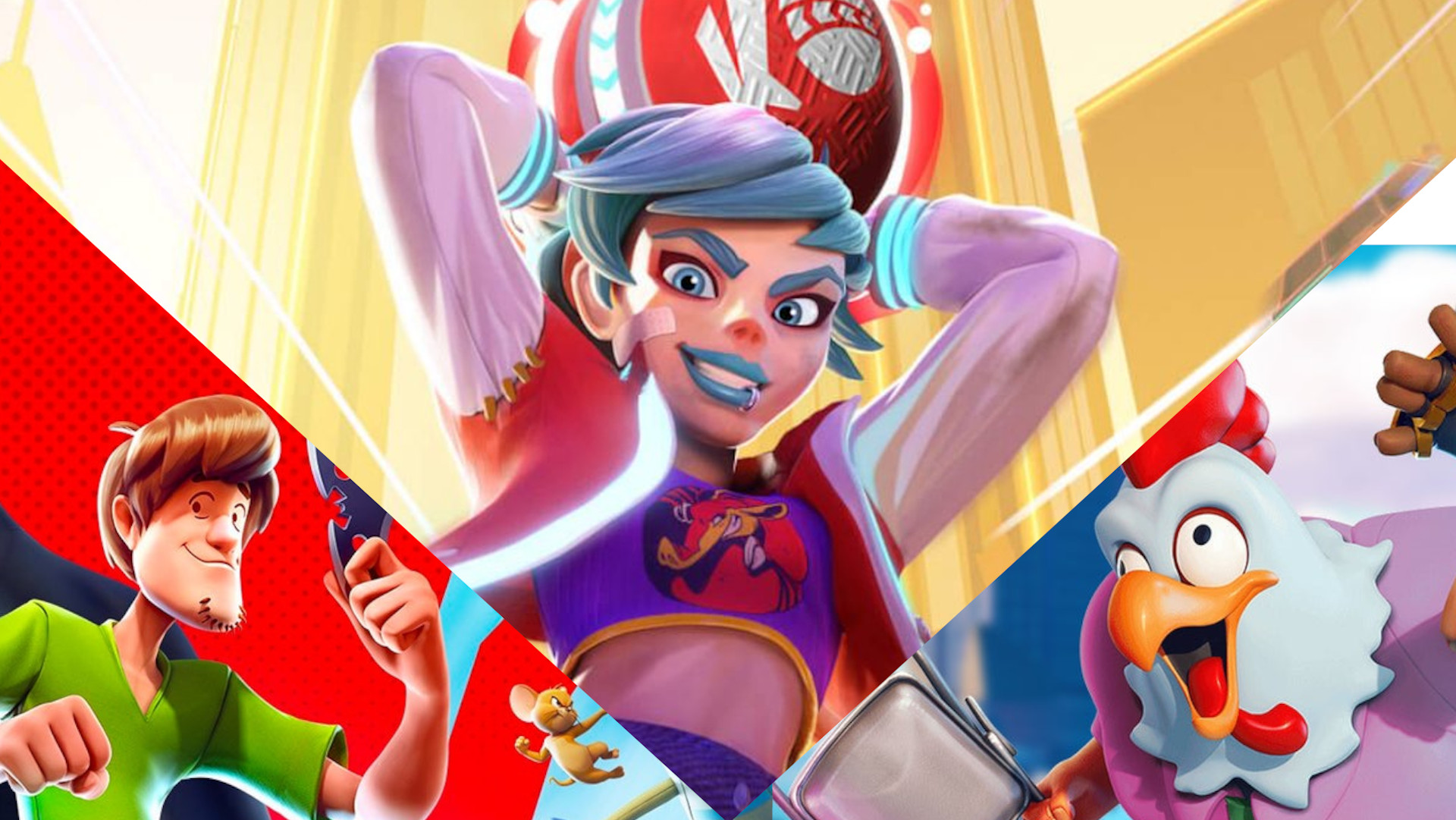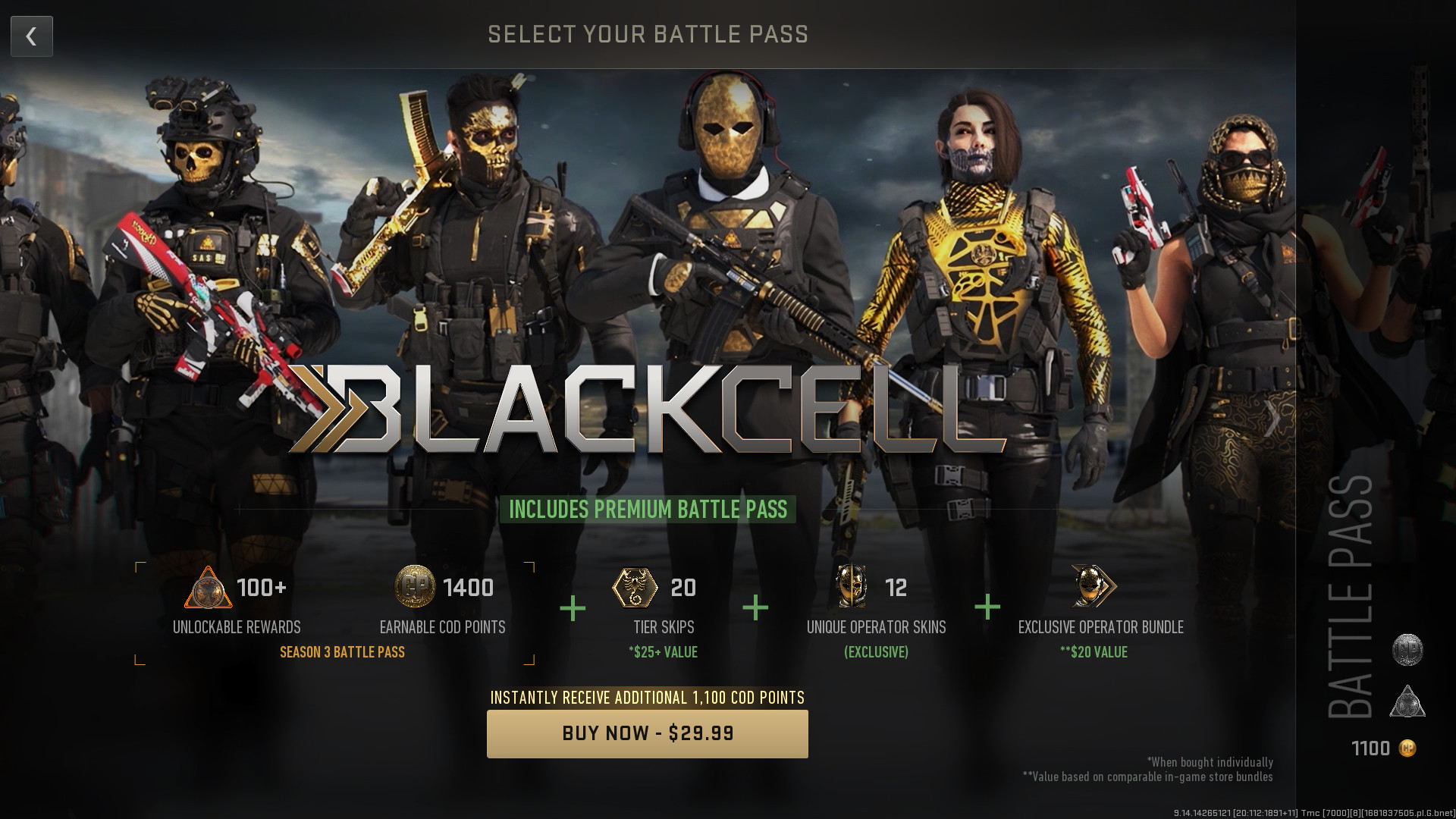Live service keeps killing modestly successful multiplayer games, and it doesn't have to be this way
It's time to buy videogames again.

I'm starting to miss the days when multiplayer games cost money. In 2013, I bought Chivalry: Medieval Warfare on sale for $9. Despite only clocking a few hours in it, I liked it enough to occasionally come back and play a few more hours years later. There are 90 people playing it that I could join with right now. I like to think that my single purchase 10 years ago contributed in a small way to Torn Banner Studios eventually getting to make an amazing sequel.
I wish I could say the same thing about Rumbleverse, the Epic-published wrestling battle royale that came out last August. I liked Rumbleverse too, enough to play it for about a week. A battle royale with deep melee combat and zero guns struck me as a thing that deserves to exist. I always meant to get back into Rumbleverse, but a month ago it died. Then two more games I loved got the chopping block. Knockout City announced its shutdown in February and weeks later MultiVersus was pulled from stores (though the devs say it's coming back next year).
Watching these shutdowns gave me a guilty knot in my stomach—should I have played more? Is this because I didn't buy last season's battle pass? It's ridiculous to think I'm somehow complicit in destroying a promising videogame because I stopped playing it for a while, but that's the vicious cycle of live service. Games are only as successful as their last month. If Chivalry had been held to that standard, it would've shut down a decade ago. We know it doesn't have to be this way.
Live service is slowly killing an entire class of videogames, and it sucks.

Fortnite messed with our heads
Six or seven years ago, when we were still deciding what to call these "ongoing games," I was fully onboard. The early wave of service games—Overwatch, PUBG, Rocket League—had an upfront cost for the game itself with microtransactions within, which we understood to be funding the cost of running the servers.
Epic essentially rewrote the book on live service when Fortnite took off in 2018. Fortnite's unbelievably quick turnaround on meaningful updates, its surprising implementation of live events, and its "more is more" approach to cosmetics ballooned our expectations around how much "service" a game should provide.
To compete in a post-Fortnite world, your game had to release cosmetics weekly, develop limited-time events that'd make headlines, create a 100-tier battle pass, and above all else, be free-to-play. The 12-week season became the six-week season with an extra "midseason" content drop. In-game events became out-of-game opportunities to sell double-priced skins that can't be earned with in-game currency. Fortnite is everywhere in everything, and not even pre-Fortnite games are immune. Those older games listed above? They all have battle passes now and all went free.
Keep up to date with the most important stories and the best deals, as picked by the PC Gamer team.
With Fortnite as the north star, live service got to where it is now, with studios betting everything on the notion that if it makes a good game for free, the money will come later.
Quality isn't enough anymore
It's not a failure of Knockout City that I had all of my fun in its first month.
We know how that went for Rumbleverse, MultiVersus, Knockout City, and others: game releases for free, lots of people try it, fewer people stick around, and then game dies because it "couldn't find an audience."
But that last part always sounds like crap, doesn't it? We're not talking about "dead games" here. These games found audiences—all three were modestly popular, they just weren't Apex Legends popular. Of course they weren't! We're talking about dodgeball deathmatch, wrestling royale, and a Super Smash Bros clone. They were always going to be more niche than massive-budget shooters. More importantly, they weren't competitive or complicated enough to keep players interested forever, and that's OK.
It's not a failure of Knockout City that I had all of my fun in its first month. Apex Legends is an "always game," and Knockout City is a "sometimes game"—a game you might not play weekly or even monthly, but you come back to for years in small bursts.
Sometimes games, to me, are the co-op or lightly competitive gems I fire up for a night with Discord friends every few months, and they're secretly the greatest. Recent favorites include Deceive Inc, Deep Rock Galactic, Midnight: Ghost Hunt, Risk of Rain 2, and Ready or Not.

Live service has created a lot of sometimes games that are built to operate like an always game. The problem is live service only really works for always games, because it requires that people are always spending money. It doesn't matter how many new characters arrive in MultiVersus or how many outfits Rumbleverse cranks out, the square peg was never going to fit in the round hole. Even if you do make a robust, free-to-play battle royale with live service hooks, there's no guarantee it'll hit: it's pretty crowded with Apex, Fortnite, Warzone, PUBG, Overwatch 2, CS:GO, Destiny 2, Lost Ark, and Siege all still going strong.
The last multiplayer game to successfully break out from the crowd was Valorant three years ago, and that took the full might of Riot to pull off. Ubisoft tried with Hyper Scape and didn't make it two years.
The best sometimes games don't need to be skyscrapers. They don't rank on Steam's most-played charts because they don't have to. They don't need a roadmap or a battle pass or a Marvel crossover event to bring people in. They just need to be there when we want to play them, ideally with a new chunk of levels or characters to try since the last time you played. The sometimes game is where the paid expansion thrives—see Risk of Rain 2's Survivors of the Void pack or Monster Hunter Rise's Sunbreak. We crave good excuses to return to games we love, and we'll pay for them.
It's time to buy entire games again
The shine has worn off live service. We've seen where it can work well and how it can create instability. We've gained accessibility but lost longevity. The increasingly short lifespan of good multiplayer videogames is alarming. What might it look like for publishers to go back to charging money for games?
The modestly successful sometimes game might be making a comeback in 2023.
A radical concept, I know, but it's at least more honest and chill than what we have now: $100 gun skins in Valorant, ultra deluxe $30 battle passes in Call of Duty, and a skin subscription service in Fortnite. Boot up Warzone 2 or Fortnite in 2023 and you're not taken to a play button, you're shown a shiny buy button. These are fun videogames that are technically free, but the increasingly invasive barrage of advertisements and nagging deal reminders aren't fun. Call me old fashioned, but I don't love when a game feels more like a storefront.
Those stores do fund lots of modern conveniences: In 2023, the norm for multiplayer games is quick matchmaking at any time of day, official dedicated servers, worldwide region support, low pings, robust anti-cheat, toxicity bans, and 24/7 technical support. Smaller games can't check all of those boxes, but the old ways still have life in them. Allowing players to host or rent their own servers takes some of the weight off developers and allows the community to police itself (a double-edged sword for sure).

It's not far-fetched: people will pay for custom multiplayer experiences, and my 12-year-old cousins know how to rent a Minecraft server. Matchmaking is convenient, but it's also never been easier to gather a bunch of people in one online place: Discord is perfect for organizing play sessions for low-population games. Full Ratz Instagib servers might never happen without it.
The modestly successful sometimes game might be making a comeback in 2023. Several new multiplayer games of late are notably not free: Deceive Inc, the social deception FPS inspired by Hitman and Spy Party, is a $20 buy-in. It has a small cosmetic store and planned seasonal content, but the meat of the game (agents and ability unlocks) is earned just for playing. Boundary is a remarkably well-made astronaut FPS in early access for $25. Chivalry 2 recently made it onto Steam and continues to rule.
Then there are the live service games that were never free, yet continue to thrive. Rainbow Six Siege ($20) is Ubisoft's single live service success story that it keeps trying to repeat. Hunt: Showdown is an excellent $30 extraction shooter bolstered by an enticing weapon grind, reasonable DLC, and an enthusiastic, but comparably modest playerbase. Escape From Tarkov has carved out its own community outside Steam with a $50 price tag.
Free-to-play isn't going anywhere, but charging for good games works too. I hope the next Rumbleverse or Knockout City isn't designed to die if the server population dips. These games weren't massive hits, but they were fun. Now they're gone.

Morgan has been writing for PC Gamer since 2018, first as a freelancer and currently as a staff writer. He has also appeared on Polygon, Kotaku, Fanbyte, and PCGamesN. Before freelancing, he spent most of high school and all of college writing at small gaming sites that didn't pay him. He's very happy to have a real job now. Morgan is a beat writer following the latest and greatest shooters and the communities that play them. He also writes general news, reviews, features, the occasional guide, and bad jokes in Slack. Twist his arm, and he'll even write about a boring strategy game. Please don't, though.

